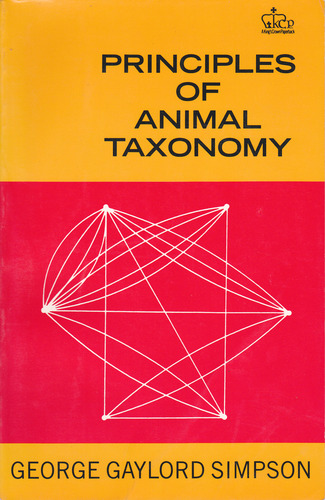Principles of animal taxonomy pdf free
Par bogard adeline le lundi, septembre 5 2016, 08:36 - Lien permanent
Principles of animal taxonomy by George Gaylord Simpson


Principles of animal taxonomy George Gaylord Simpson ebook
Publisher: Columbia University Press
Format: djvu
Page: 131
ISBN: 023109650X, 9780231096508
Fisheries, Poultry, Microbiology, Sericulture, Agriculture, Forestry, Diary Technology, Pharmacy, Veterinary Sciences, Food technology and Genetic engineering. At all times, one of the key tasks of biology as a science was to establish the life form classification – systematics, taxonomy. The end result was a classification of existing 'data assets' into three main types of animals (although I would later argue the animals were really different zoos.) From this I During the UX design a fundamental principle was data integrity. The principles of naming new species of animals may seem like tedious legal work, but it can be fun—and sometimes you get to honor people as well with a new species named after them. French, German, Russian, and other languages do not have to accord with English ways of splitting up animals. Plant, animal and mineral systematics principles were stated by Karl Linney back in the 18th century. Comparison of exotic horn types The heroic age of biological taxonomy is long over, but anatomy as an explanatory principle is still able to take over with a special convincing force any wonderful being from the world of legends to our one. While doing a presentation on the Principles of Taxonomy, I was asked the question of “How do you know when to choose a hierarchical taxonomy or a faceted taxonomy? Taxonomy is international -- everywhere, we recognize that humans are hominoids. We shouldn't smuggle taxonomic principles into everyday language to make a political argument. The classic example is Linnaeus' animal kingdom taxonomy. Each recently discovered new animal or prodigious being became understandable and inserted in the common system for once as soon as its anatomy was described and, first of all, depicted. English words do not need to be monophyletic. History Among the dynamics in play here, we can see the general and specific principle at work. The first section "Conservation Medicine" introduces fundamental principles in conservation biology, ecology and environmental health assessment as a foundation for understanding wild animals and their diseases in a wider framework.